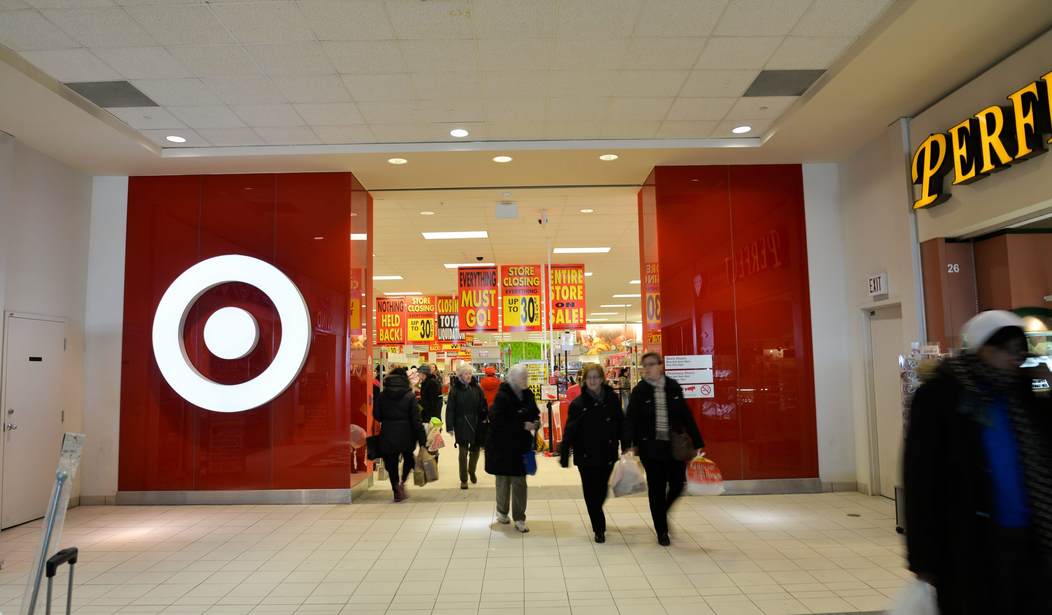Target has not had a good year — not at all. Now, the crowning achievement of the retail giant’s string of bad luck is a one-day stock drop unmatched since the economic crisis of 2008. In dollar terms, the drop was the company’s largest hit ever.
This bad news follows nearly a year after the company made its infamous decision to open sex-segregated bathrooms and changing rooms to those who identify as the oppose sex (transgender people). Since then, the brand has taken a huge dive, and the stock price has never fully recovered since late April 2016.
As MarketWatch reported, this past Tuesday, Target Corp. shares fell by $8.14, or 12.2 percent, to the lowest price since August 20, 2014. This followed a report of fourth-quarter profits that fell below expectations, and a pessimistic full-year outlook.
The selloff was the biggest one-day price decline since Target’s stock started trading in January 1972. The second-biggest price drop was $5.61 — on May 18, 2016, also after reporting quarterly results.
This one-day percentage decline was the fifth-biggest ever for Target, the largest since its stock price plummeted 12.5 percent on December 1, 2008. The biggest decline (33 percent) came on October 19, 1987, known as Black Monday.
To make matters worse, Target’s disappointing results contrasted with better-than-expected earnings reported by Wal-Mart Stores Inc. and Home Depot Inc.
“Our fourth-quarter results reflect the impact of rapidly-changing consumer behavior, which drove very strong digital growth but unexpected softness in our stores,” Target Chief Executive Brian Cornell explained. “While the transition to this new model will present headwinds to our sales and profit performance in the short term, we are confident that these changes will best-position Target for continued success over the long term.”
There is a different explanation, however. “Target stock is tumbling after they announced a pro-transgender restroom policy allowing men to use women’s bathrooms and changing rooms,” Franklin Graham, president of the Billy Graham Evangelistic Association, declared in May of last year, roughly one month after Target announced the new policy. Ten months later, his observation still rings true.
Over 1.4 million have signed an American Family Association pledge to boycott Target stores over the transgender bathroom policy (the boycott pledge reached 1 million in its first week).
Furthermore, according to YouGov’s BrandIndex, Target’s purchase consideration levels dropped toward a three-year low following the transgender announcement. This trend continued into late June. While this drop was not as steep as the one Target took after a 2013 data breach, it had never fully recovered to pre-breach levels.
Before the 2013 breach, Target had a 49 percent purchase consideration rate — 49 percent of consumers were considering purchasing from there the next time they went shopping. After the breach, that dropped to 36 percent. In 2014 and 2015, the consideration rate hovered between 41 percent and 43 percent. On April 15, 2016, it stood at 42 percent. By May 18, it dropped to 35 percent.
It isn’t just conservatives and Christians who might be wary of shopping at Target stores in light of the new transgender policy, however. Women and parents of girls who value their privacy might think twice about this retail giant, as reports came in across the country last year of men dressing like women to peek and take pictures of girls and women in Target dressing rooms. Opposition to the push for transgender bathrooms and changing rooms isn’t all ideological.
In a meeting with Wall Street analysts, Target provided some details on investments to improve its sales. The company intends to spend $1 billion in 2017 to ensure prices are competitive and to revamp more than 100 stores, MarketWatch reported. The company will invest more than $7 billion over the next three years, to update more than 600 stores and open more than 100 small-format stores by 2019, and introduce more than 12 new brands.
“While the transition to this new model will present headwinds to our sales and profit performance in the short term, we are confident that these changes will best-position Target for continued success over the long term,” the chief executive, Cornell, said.
While these investments might help turn business around, it might be wiser to end an unpopular bathroom policy and welcome back at least 1.4 million dissatisfied consumers.









Join the conversation as a VIP Member